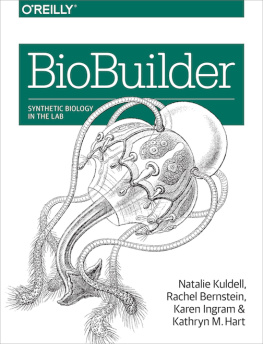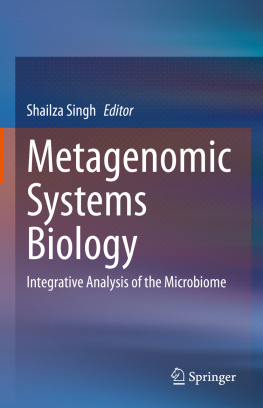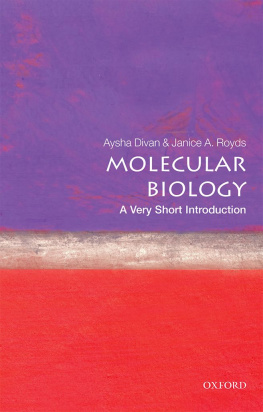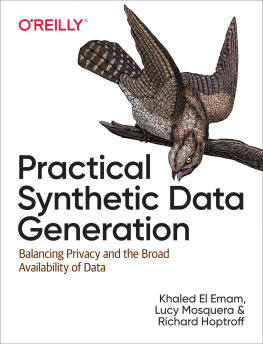BioBuilder
by Natalie Kuldell , Rachel Bernstein , Karen Ingram , and Kathryn M. Hart
Copyright 2015 BioBuilder Educational Foundation. All rights reserved.
Printed in the United States of America.
Published by OReilly Media, Inc. , 1005 Gravenstein Highway North, Sebastopol, CA 95472.
OReilly books may be purchased for educational, business, or sales promotional use. Online editions are also available for most titles (http://safaribooksonline.com). For more information, contact our corporate/institutional sales department: 800-998-9938 or corporate@oreilly.com .
- Editors: Mike Loukides and Brian MacDonald
- Production Editors: Kara Ebrahim and
Matthew Hacker - Copyeditor: Octal Publishing
- Proofreader: Kim Cofer
- Indexer: Wendy Catalano
- Interior Designer: David Futato
- Cover Designer: Ellie Volckhausen
- Illustrator: Rebecca Demarest
Revision History for the First Edition
- 2015-06-18: First Release
See http://oreilly.com/catalog/errata.csp?isbn=9781491904299 for release details.
The OReilly logo is a registered trademark of OReilly Media, Inc. BioBuilder, the cover image of a golf tee medusa, and related trade dress are trademarks of OReilly Media, Inc.
While the publisher and the authors have used good faith efforts to ensure that the information and instructions contained in this work are accurate, the publisher and the authors disclaim all responsibility for errors or omissions, including without limitation responsibility for damages resulting from the use of or reliance on this work. Use of the information and instructions contained in this work is at your own risk. If any code samples or other technology this work contains or describes is subject to open source licenses or the intellectual property rights of others, it is your responsibility to ensure that your use thereof complies with such licenses and/or rights.
978-1-491-90429-9
[LSI]
Preface
This book began with a relatively modest mission, namely to support the growing BioBuilder community, the teachers and students around the country and the world who are learning to engineer biology. BioBuilding is a challenging endeavor, and we heard over and over that a book like this would help. So here it is. We hope its helpful. We hope you like it.
Weve written for a non-scientist, non-engineer reader. Importantly, though, the questions that motivate the content are the very hard questions that synthetic biologists wrestle with daily. How can cells be engineered in a rational way? Is it possible to ensure reliable behaviors? What can we learn as we approach life science with an engineers toolkit?
Who Should Read This Book
We hope a wide range of readers will find this book useful. Our writing began with teachers in mind, since these are the individuals weve come to know through the BioBuilder program. They have been enthusiastically bringing this content into their biology and biotechnology classrooms around the country and throughout the world. Early feedback we got on the book made us realize that teachers wanted to share the book directly with their students, and so the teachers manual wed originally envisioned soon morphed into a resource that students and teachers can use together.
We think our book now meets the needs of many curious readers and all kinds of learners. Our intended audience includes high school and college instructors, students active in biodesign clubs, adults engaged in community laboratories, and artists working in design studios. We hope there is something in this book for everyone who wants to know more about the theoretical and practical aspects of synthetic biology.
Why We Wrote This Book
BioBuilder bridges the gap between the way we do science and the way we teach it. The ideas presented here and the labs that spring from them are based on current research in the field. The authenticity sparks student interest, and weve seen how it can excite and empower learners at all levels. But its hard to be working on the edge of whats known, so we wrote this book to support the teachers and students who want to use unknowns as their point of departure for learning.
We also wrote this book because we love synthetic biologys mixture of science and engineering, and we wanted to show how its working in practice. Our foundational chapters emphasize how synthetic biology brings some successful tools from more mature engineering disciplines to the life sciences. Our laboratory-focused chapters start with an authentic research question and then provide protocols to approach it from an engineering perspective.
With its mixture of foundational content, lab investigations, and biodesign activities, this book is our best effort to engender curiosity and enthusiasm for the field. We take an approach to synthetic biology and education more generally that resembles what Antoine de Saint Exupry encouraged for ship-building in The Little Prince, namely If you want to build a ship, dont drum up people to collect wood and dont assign them tasks and work, but rather teach them to long for the endless immensity of the sea.
A Word on Synthetic Biology Today
The goal of synthetic biology is to engineer robust, synthetic, living systems in scalable and reliable ways. Some who are working in the field are applying synthetic biology to address our planets need for sustainable food and fuel production. Others are developing biotechnologies such as medical diagnostics or treatments. A smaller but vital subset of people view synthetic biology as a design challenge that they can apply to art, architecture or community innovations. No matter what the application space, though, youll see weve got a lot to learn and long way to go before the work is easy to do .
Even in its early days, synthetic biology has a lot to teach us. New scientific understanding, improved engineering approaches and novel technologies are all naturally derived from this synthetic approach. Building biology tests our current understanding of the world and so serves as a powerful force to discover new science. It also motivates the development of new tools and processes that speed the engineers design/build/test cycle. As a genuinely interdisciplinary endeavor, the field brings coherence to STEM education in a way that seems unique to us. So while the field may be immature, we think it is already an outstanding approach to teaching and learning. Because it is based on synthetic biologys real unsolved questions, BioBuilders curriculum applies knowledge, and so moves classroom and laboratory education away from rote memorization and cookbook technical steps. It features synthetic biology as a series of investigations that integrate scientific understanding with engineering approaches to develop solutions that meet real-world challenges.
Navigating This Book
This book is intentionally modular and can be reordered to suit your needs. In its digital form, the chapters can easily be rebundled and shared through our creative commons license. The books printed form required a sequence for the chapters, and so we have organized things as follows.
Chapters 14 introduce some of the approaches fundamental to synthetic biology:
- , provides a basic introduction to the field, emphasizing synthetic biologys interdisciplinary nature and some of its foundational tools from engineering and molecular biology.
- , provides a framework for biodesign, including an abstraction hierarchy for managing complexity and some examples that unpack living systems into the devices and parts that encode them.







